The Rise of QR Code in Philippines: What to Know
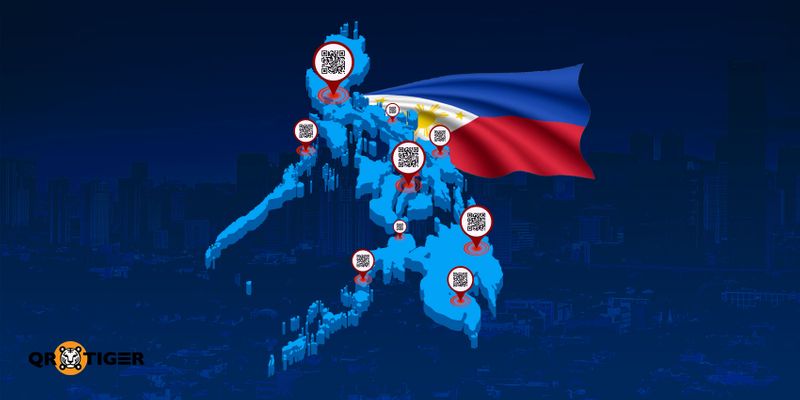
In a country where everything happens on the go—from jeepney rides to halo-halo breaks, QR codes are becoming an unavoidable part of everyday life.
QR codes in the Philippines are the flag-bearers of the country’s shift toward mobile-first solutions across retail, transport, and public services.
What started as a tool for cashless payments is now helping local brands and government bodies to connect with customers, share information instantly, and build smarter experiences.
To support this growing demand, numerous businesses rely on the best QR code generator to create dynamic, branded, secure QRs for every use case.
Table of Contents
QR code adoption in the Philippines by the numbers
In the first half of 2021, the Central Bank of the Philippines, or Bangko Sentral ng Pilipinas (BSP), officially launched the National QR Code Standard (QR Ph) for person-to-merchant (P2M) payments.
This is a big step in BSP’s Digital Payments Transformation Roadmap (DPTR), which aims to convert 50% of retail payments from cash to digital by 2023.
In 2021, the value of QR payments almost reached one billion pesos, jumping to 1,498% in volume and 6,267% in value compared to 2019. The country’s QR adoption rate for payments continues to rise year-over-year.
Mamerto Tangonan, deputy governor of BSP and head of the Payment and Currency Management Sector (PCMS), aimed for 70% of Philippine adults to use the bank and 50% of total retail payments to be made digitally.
The peso to USD QR code in the Philippines is supported by most forex centers and digital wallet apps like GCash and PayMaya to simplify dollar-based transactions for tourists and OFWs.
Small vendors across the Philippines are quick to adopt QR codes. Government services have also gone digital, with codes being used for contact tracing through apps like StaySafe and on documents like the VaxCertPH.
The Philippine travel information system integrates digital forms and QR codes to improve the travel experience and secure border control.
Businesses and organizations that trust QR TIGER
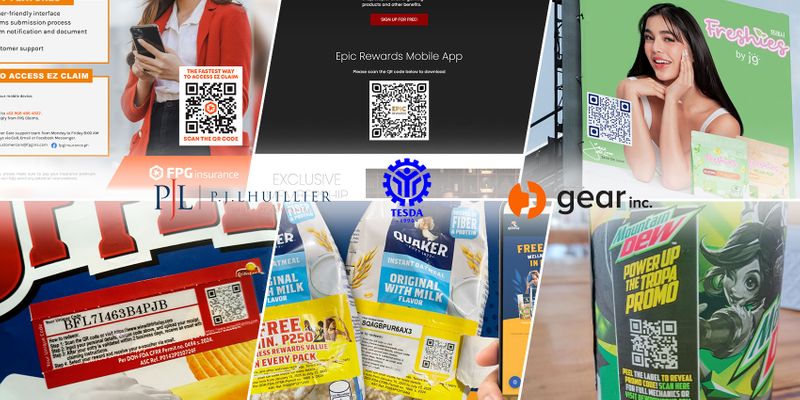
Like everywhere else, the adoption of QR codes in the Philippines began during the COVID-19 pandemic.
With good QR code software, turning simple scans into powerful brand moments is possible—and Filipino businesses and organizations know this.
From government agencies to corporate tycoons, institutions in the Philippines trust QR TIGER to power smarter, more connected experiences.
P.J. Lhuillier, Inc.
P.J. Lhuillier, Inc. is the parent company of Cebuana Lhuillier, the leading microfinancial services provider in the Philippines.
Established in 1953 under Agencia Cebuana and later adopting its trade name Cebuana Lhuillier in 1987, this distinguished Filipino company has been dedicated to fulfilling its vision of empowering Filipinos through accessible financial services.
The company uses QR codes for various purposes: payments, recruitments, and scholarship applications, among others.
FPG Insurance
FPG is a leading insurance company in the Philippines.
Over the years, they have built an enviable reputation for developing customer insights that support the creation of relevant commercial and individual insurance products and solutions.
The company uses QR codes for various purposes. If customers want to file or access a motor insurance claim, they can scan a QR code.
They can also make premium payments quickly and easily using a QR code.
Newport World Resorts
Newport World Resorts is the first integrated resort in the Philippines. It is a one-stop, non-stop entertainment and leisure destination with gaming thrills, world-class entertainment, unique events, and exciting lifestyle options.
The resort chain uses QR codes for its Epic Rewards membership programs.
Resort members can use a One Card to make payments at affiliated hotels and partner merchants. The resort uses a QR code to inform members about the terms and conditions of using their One Card.
The Newport Mall offers AR adventures for its visitors. The AR venture can be accessed by scanning a QR code found at various locations in the mall.
Furthermore, the Newport Casino is available online. Customers can access their games anytime, anywhere by scanning a QR code.
TESDA
The Technical Education and Skills Development Authority (TESDA) in the Philippines is a government agency under the Department of Labor and Employment (DOLE).
TESDA manages and supervises technical education and skills development (TESD) in the country. The agency uses QR codes on training certificates for easy verification.
When scanned using any barcode scanning app, these codes redirect to the TESDA Training Management and Information System (T2MIS), allowing users to view the individual's training and completion details.
Gear Inc.
Founded in 2007, Gear Inc. was established to meet the growing global demand for reliable and high-quality outsourced IT services.
Today, the company specializes in delivering custom-tailored BPO solutions seamlessly.
Quaker
Quaker, the well-loved breakfast oats brand, is using QR codes on its product packaging smartly.
With just a quick scan, shoppers can learn everything they need to know, including the ingredients, nutrition facts, certifications, and how to use the product.
But they didn’t stop at just information. Quaker rolled out fun campaigns, such as a fitness rewards challenge and a scan-and-win contest with exciting prizes.
On Quaker Chewy Granola Bars, a QR code led parents to a sweet surprise: a personalized message from Nick Jonas himself for their kids.
Freshies by Juju Glow
Freshies by Juju Glow is a Southeast Asian skincare and beauty supplements brand.
The company incorporated QR codes in their out-of-home (OOH) marketing campaign, spreading brand awareness and facilitating offline-to-online engagement.
In August 2023, the brand launched its first billboard, which featured a dynamic QR code for Freshies, its viral avocado collagen milk drink.
By simply scanning the code, customers are directed to Juju Glow's website, where they can explore more about the Company’s products and participate in promotions exclusively for scanners.
The QR code offered an engaging experience for their customers.
Frito Lay PH
Lay’s QR code campaigns have made their mark with creativity and brilliance.
The brand uses QR codes to offer exclusive rewards, interactive engagement, and unlock cashback opportunities.
The QR codes they used provided them with flexibility and versatility, cost effectiveness, and several other advanced features.
With genius incentives and the clever use of cool QR codes, Lay’s has really shown the world how it’s become the giant it is today.
Mountain Dew x MLBB collab
As part of a collaborative campaign, Mountain Dew partnered with the multiplayer online game, Mobile Legends: Bang Bang.
Mountain Dew served free diamonds from the Land of Dawn for heroes brave enough to claim them.
A hidden promo code nestling at the back of a peelable label with a Mountain Dew QR code to guide the customers to this legendary status.
MLBB players could collect free diamonds to enhance strategies, customize heroes, and dominate the battlefield.
Giant COVID-19 QR code campaign
In the first quarter of 2020, a group of students from the Philippines made a giant QR code fashioned from face masks to remind people and address issues and concerns involving front-line staff and the environment worldwide.
Their main goal was to inform people about the sacrifices of the frontliners and the environmental issues that COVID-19 presents.
Why QR TIGER is the best QR code generator for Filipinos
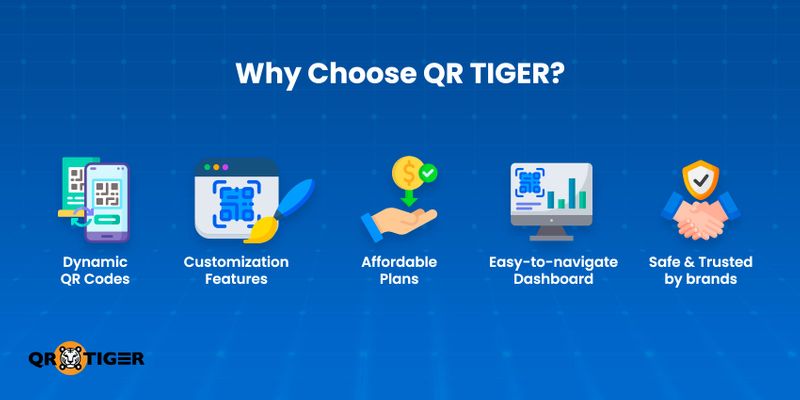
The QR code software is the top choice for Filipino users, whether you're a small business owner, a marketing team, or part of a government initiative.
Here is why it’s the best QR code software:
- Dynamic QR codes: Users can generate dynamic QR codes for free. They can update the content behind the codes and track scans in real time, allowing them to monitor scan counts, time, location, and device types.
- Fully customizable QR codes: They can customize their QR codes with their brand logos, color palettes, call-to-action frames, and various shapes. QR codes with a logo and call to action get 80% more scans than those without.
- Affordable plans: Its pricing plan is flexible. Users can start with the free plan for basic needs or upgrade to affordable premium tiers. Premium plans unlock advanced features such as dynamic QRs, scan analytics, and more.
- Easy-to-navigate dashboard: The platform is perfect for startups and SMEs looking to scale, local vendors digitizing their menu systems, schools and non-profits with limited budgets, and corporate tycoons launching global campaigns.
- Secure, scalable, and trusted by global brands: It is an ISO 27001-certified and GDPR-compliant platform, meeting the highest data protection and information security standards. Users can confidently scale their digital efforts while ensuring safety and compliance.
Notable applications of QR codes in the Philippines
The widespread use of QR codes reflects the country's growing shift toward contactless transactions and mobile-first services.
Let us look at more real-life QR code use cases and brand campaigns that have taken the Philippines by storm over the years.
QR Ph payments
QR Ph is the national QR code standard developed by the Philippines’ central bank, Bangko Sentral ng Pilipinas (BSP), based on the Europay-Mastercard-VISA (EMV) standard.
It standardizes using a QR code for payment purposes, making digital payments easier and more secure.
Any participating bank or Equated Monthly Installment (EMI) mobile app may scan it for fund transfers and payments.
With the national rollout of QR Ph payments, consumers can use a unified QR system to pay seamlessly across participating banks and e-wallets.
Transactions using QR Ph reached ₱974.2 million as of the end of May 2021.
PhilSys Check

PhilSys Check is a tool developed for Philippine Identification System (PhilSys) relying parties and the general public. It makes it easier and faster to authenticate a PhilID or ePhilID holder’s identity.
Users can scan the QR code printed on the back of a PhilID card to verify key details by visiting the site.
This includes personal information and biometric data, ensuring the cardholder’s identity is valid and secure.
ValTrace and PasigPass
On September 12, 2020, the City Government of Valenzuela launched ValTrace to upgrade the contact tracing efforts in the city. (Philippine News Agency)
This technology allows visitors of closed establishments in Valenzuela City to download their unique QR codes.
Visitors can use the QR codes upon entry instead of manually logging in to contact tracing forms.
Later, the City Government of Pasig also adapted this innovation, rolling out its own QR code-based contact tracing method called “PasigPass” as part of its new health monitoring system.
NAIA (Ninoy Aquino International Airport)
The Bureau of Customs deployed QR codes in 2021 to gather stakeholder feedback via digital forms, displaying real-time ratings dashboards in offices and warehouses.
The system was linked to the NAIA port’s dashboard, which displays real-time statistics on the stakeholders.
The QR code was also prominently placed in the Port of NAIA’s offices and warehouses and on all of its media platforms.
BPI OneQR
The Bank of the Philippines Islands’ BPI OneQR simplifies person-to-merchant payment acceptance.
It accepts real-time transactions, tracks sales effortlessly, and saves on transfer fees.
Merchants can receive payments from their customers in real time with just one QR code and monitor payment transactions in real time using the BPI OneQR portal.
One significant benefit of OneQR is that all sales will go straight to your BPI account. There is no need to manually transfer funds.
eTravel QR code
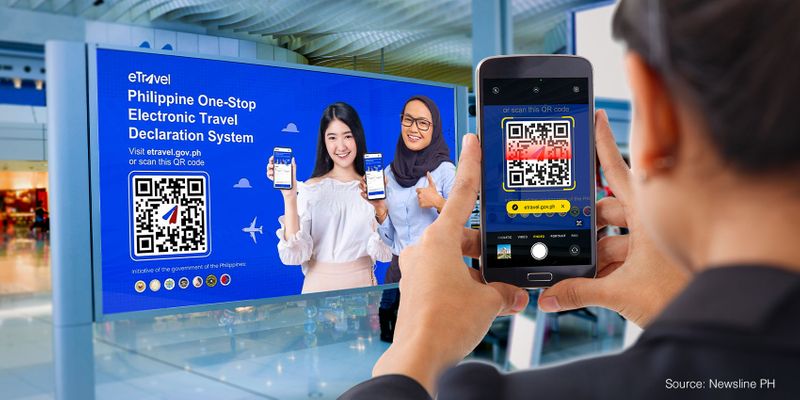
The Department of Tourism in the Philippines uses QR codes for various purposes. It is mainly aimed at making the whole tourism experience easier.
Travellers can scan the QR codes from the Philippine Department of Tourism (DOT) to access information on the Philippine Travel App, a Sightseeing Map / Infographic on Philippine tourist destinations, and more.
Travelers must secure a QR code for arrival in the Philippines through the eTravel portal, which is used for health declarations and entry processing.
The eTravel QR code is a mandatory digital form required by Philippine authorities for inbound passengers to streamline arrival procedures.
Beep QR
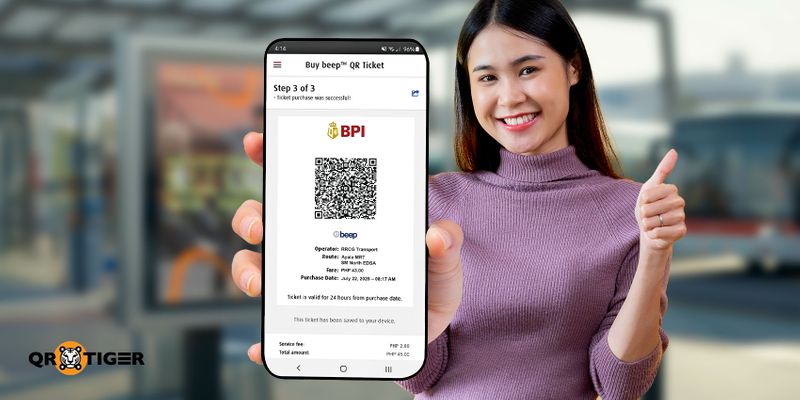
Beep QR is a QR code-based ticket that users can scan before riding the bus or ferry instead of using a Beep card or a regular ticket.
Users leveraging this facility can scan the QR code on their smartphone's turnstile before boarding the bus or ferry.
Users can generate their Beep QR ticket using the BPI mobile app.
BDO Pay QR code
Banco De Oro (BDO) is a full-service universal bank in the Philippines that offers an array of industry-leading products and services.
BDO Pay can be used to make payments at grocery shops, cafes, gas stations, and other locations.
The application has a QR code which allows payment by “scan QR” or “show QR”.
The former scans the store's QR tent card or the POS-generated QR code to pay, and the latter generates a QR code through your app and presents it to the cashier for payment.
From food stalls to shopping malls, businesses now display a payment QR code to offer fast, secure, and cashless transactions.
Security Bank QR code
Security Bank QR codes allow users to instantly accept payments from individuals and businesses.
Users can receive real-time payments to their Security Bank account and view transaction updates regularly.
Pay Maya Scan to Pay campaign
PayMaya, now known as Maya, promoted "Scan to Pay" as a convenient way for users to make cashless payments.
This feature allows users to scan QR codes using the Maya app to pay at various merchants, both online and in physical stores.
The "Scan to Pay" function is integrated into the Maya app and is part of their broader effort to promote digital and financial inclusion.
QR code ordering system
Many Filipino businesses now use a link to QR code approach, where a simple URL can instantly generate a scannable code for menus, payment portals, or promotional landing pages.
QR code ordering lets your customers easily place orders and make payments online with their mobile devices, increasing operational efficiency and improving the customer experience.
Qashier is an application active in the Philippines that scans a QR code to view the menu and start ordering.
Philippine Red Cross
Mobile wallet PayMaya has partnered with the Philippine Red Cross to allow QR code-based donations to those in need amid the coronavirus (COVID-19) pandemic.
Users can make a quick and instant donation to the Philippine Red Cross by scanning a QR code using their PayMaya app.
GS1 Philippines
GS1 Philippines, the leading organization on local barcode standards, uses 2D barcodes, including QR codes, to boost supply chain efficiency and enhance consumer engagement through digital labeling.
The implementation of a new Philippine QR code system for products will allow shoppers to access detailed product information, such as ingredients, allergens, sustainability, and promotions, just by scanning the code with a smartphone.
This global step of using the GS1 digital link QR code also helps retailers ensure product safety and freshness, reduce food waste, and assist regulators in verifying sustainability claims.
Ready to scan? The Philippines already is
QR codes in the Philippines are leading the country’s digital shift. The scan culture in the country is no longer a novelty but a necessity.
As mobile-first habits deepen and digital infrastructure grows, QR codes offer a simple yet powerful way to connect, convert, and communicate.
Brand success stories could be yours, too. Head to the most advanced QR code generator with logo and create a customized code tailored to your needs.
FAQ
Is a QR code still required in the Philippines?
While QR codes are no longer mandatory for contact tracing in most areas following the easing of COVID-19 protocols, they are still widely used and encouraged in many sectors. QR codes are a part of the Philippines' shift to a digital-first ecosystem.
How do I get a QR code for the Philippines?
To get a QR code for the Philippines, you should access the country’s eTravel system. It is a digital single data collection platform for passengers arriving in and departing from the Philippines.
Using the system, you can generate a QR code and show it to an airline representative prior to boarding your flight.



